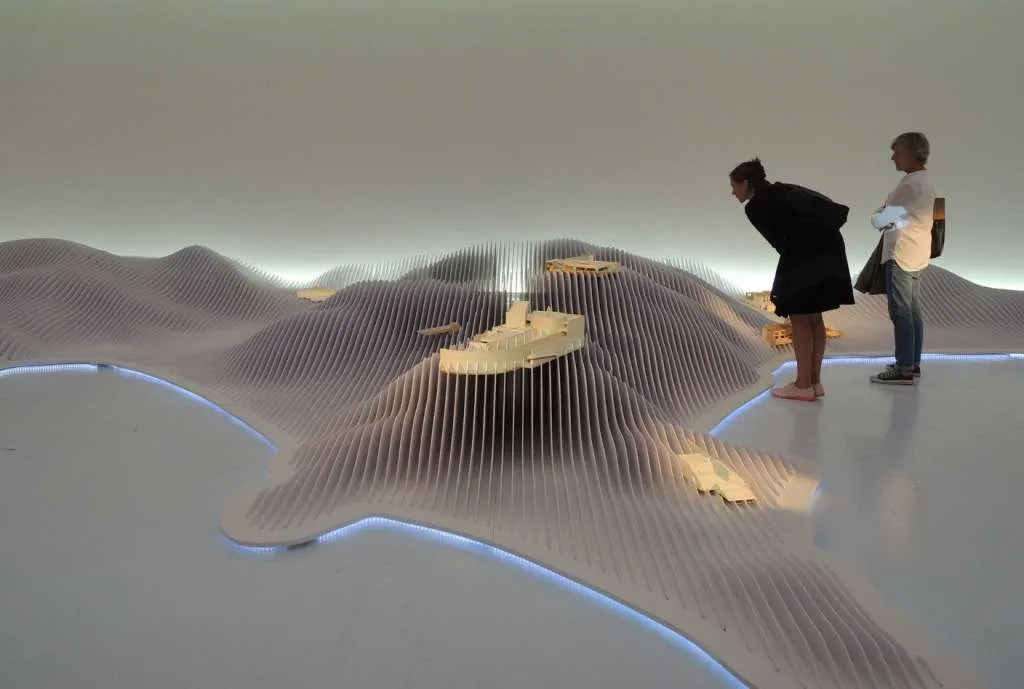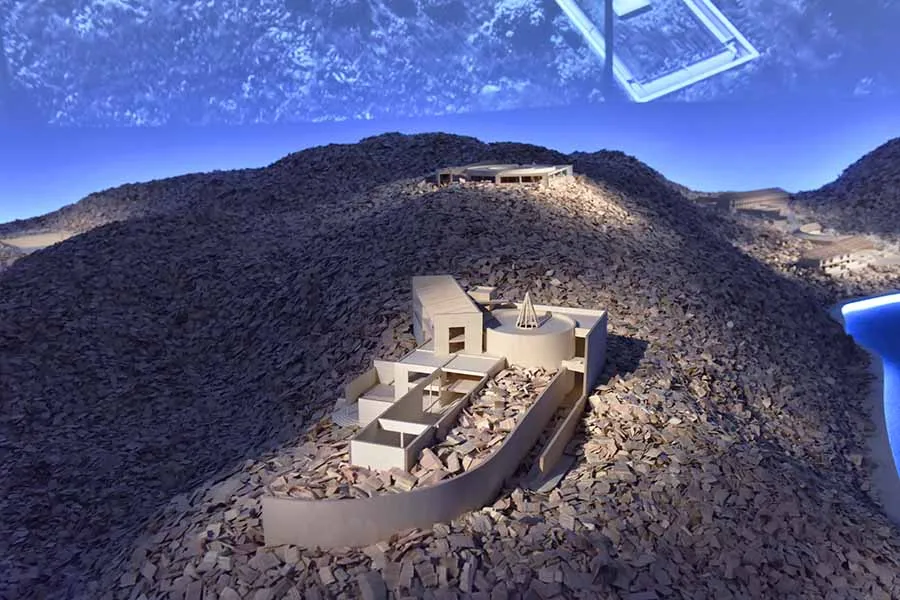Naoshima: island of art and Tadao Ando architecture that says no thanks to the era of Instagram
Benesse Holdings announced that it will open two new facilities in Naoshima, Kagawa in spring 2022. The first is the Valley Gallery designed by Tadao Ando, which is his 9th project in Naoshima. The second is the Hiroshi Sugimoto Gallery Time Corridor, a new exhibition space for Hiroshi Sugimoto’s works.
You may be excited and want to check them out on the Internet, but the images and videos on Naoshima are very limited. It’s because they are very restrictive about the use of them. But why? Step back and revisit Naoshima’s philosophy.
Images are everywhere in the era of Instagram and Youtube. As people are obsessed with posting images and videos – whether selfies or Instagram-worthy objects – companies and organizations are also on the bandwagon looking to expand their business by exposing their assets on social media. Today it’s critical to get your stuff posted, liked, followed, retweeted and clicked and played by as many people as possible.
But despite all that frenzy, there are endeavors that are committed to control their images so that they don’t become widespread on the Internet. Musician Prince was obsessed with removing his materials from the Internet before he unexpectedly passed away in 2016. And some of them are seeing tremendous success by doing so, and it’s not just by successfully protecting copyright.
Take Naoshima, Kagawa Prefecture, Japan. It is a small island that miraculously transformed itself from a remote, distressed and environmentally challenged town to the mecca of modern art: in a small town with population of 3,100, there are three major museums, art districts and various installations that attract almost 800,000 visitors from around the globe. (That’s more than 250 visitors per resident!)
The View of Seto Naikai Inland Sea
Naoshima is a small island in the Seto Naikai Inland Sea in Western Japan. It is one of more than 700 islands that are scattered within the beautiful inland sea of 23,203km2, which had often been featured in Japanese mythologies as places where deities lived.
Benesse House designed by Tadao Ando.
On a beautiful island of Naoshima, art sites are scattered, designed to dissolve into the surrounding environment.
Benesse House, 1992/1995, Naoshima, Kagawa (Photo: Mitsuo Matsuoka)
Interestingly, a small island full of artistic endeavors – i.e. Instagram-worthy places – is the one that is stubbornly against being exposed on Instagram. How did this happen?
You have to go philosophical here, step back and question what art is all about. In today’s social media-driven world, art can mean something that can catch people’s eyes through a smart phone screen. But humans have been living with art for tens of thousands of years as a source of inspiration, motivation and joy. In the world full of challenges, we have always needed things that are beautiful that could guide our way toward joy and happiness. If that’s what our life is about, art is what our life is about. It has been much larger than just a bait to lure followers.
For Bennese Art Site Naoshima, an enterprise run by Benesse Holdings, Inc. and Fukutake Foundation to organize a wide variety of art-related projects on three islands including Naoshima, art is about actual lives of local residents, communities and visitors, not just the pieces of art beautifully installed inside the museums. They aspire to dissolve art in people’s lives and vice versa. In that sense, you won’t be able to talk about art in Naoshima without talking about the local environment, communities, involved people and artists.
“Rome wasn’t built in a day.” Naoshima project started in 1985 when Tetsuhiko Fukutake, the founder of Benesse and the then-mayor of Naoshima met. Ever since, people have been working with a passion to create sustainable endeavors for art, communities and people.
Image taken at “Tadao Ando: Endeavors” held at the National Art Center, Tokyo in 2017.
Not only it’s impossible to capture all of that in pictures, taking pictures are fundamentally against the philosophy of Naoshima project, which is to blend art and people’s lives inseperably in a belief that art is about living well. Pictures inevitably slice and snap only certain elements out of the entire activities, which are more than multi-dimensional: there is artists/architects and their products, there are people, there is the environment that surrounds them, and there is history of people working together to create something extraordinary. For Naoshima project, none of them can be missing. That’s why they say no pictured allowed. Yes, “Pumpkin” by Yayoi Kusama is super Istagram-worthy. But that’s only one part of the true Naoshima experience, and they don’t want people to define what they are only by some pictures.
The only way to experience the entire “picture” is to go there by yourself, see, feel and interact using your eyes and body. That’s the only thing Naoshima project wants you to do.
Believe or not, images can limit your imagination by snapping and slicing its potential. Don’t rely on easy images, is probably what they imply, because your own imagination that comes our of your own senses, is much bigger, freer and joyful.
Architect Tadao Ando and Naoshima project
If we respect the philosophy of Naoshima project and refrain from relying on easy images on the Internet to know more about it, what else can we do? You may not have a chance to visit the island anytime soon, as it’s pretty far. Until you see it with your own eyes, Japanese architect Tadao Ando could help unleash our inspiration. He has been involved in the Naoshima project from the early stage and designed seven buildings over the course of 30 years: Bennesse House Museum, Bennesse House Oval, Benesse House Park, Beach, Chichu Art Museum, Lee Ufan Museum, ANDO MUSEUM and Minami-dera. His works on Naoshima island were featured at his exhibition “Tadao Ando: ENDEAVORS” that was held at the National Art Center, Tokyo in 2017.
The exhibit featured the model of the island, on which the models of his buildings were placed. It was surrounded by pictures of the history of the projects and each building, along with his own conceptual drawings.
Here are some of the projects Ando designed: there is only glimpse of how actual buildings looks. Hope you enjoy using your imagination to picture what they are.
The exhibit featured the model of Noashima island, which is less than 15km2 with the population shy of 3,100. The models of the buildings he designed are scattered around the island, each designed by carefully considering the surrounding environment.
There are quite some ups and downs on a small island – in Seto Naikai Inland Sea, nature is condensed and show its many faces even in a small area. Tadao Ando captured them in his design by sometimes burying substantial part of the buildings underground. The project also planted many trees to revitalize the areas affected by the environmental degradation.
Image courtesy of ©安藤忠雄展2017
At the exhibit, Ando placed the Naoshima project under the category “Reading the site.” Ando says that the first thing he does for any project is to “read” the location, as each place is a unique combination of the geographical, environmental, climatic characteristics on which local people had built communities, heritage and history. On Naoshima island, he attempted to design buildings that would completely dissolve into the environment (the nature in Seto Naikai is unbelievably special), an endeavor that could take decades as the buildings need to “mature” to completely fit into the surroundings. The process involves people’s long-term dedication to keep every element in harmony.
But what kind of project can allow architects and local people to spend 10, 20 years to “grow” the project, in today’s economy where quick ROI is everything? Naoshima is a very rare example where long-term vision was realized by the project owners and local communities determined to spend long time to achieve the goal.
Chichu Art Museum
The Chichu Art Museum (Underground Art Museum) is one of the most popular destinations in Naoshima. In order to preserve the beautiful scenery, Ando buried most of the buildings underground. The way the light comes through the ceilings into the subterranean rooms augments the beauty of the artworks by Claude Monet, James Turrell, and Walter De Maria, which are central to the permanent exhibition. Of course Claude Monet is the leading impressionist whose appreciation of light made him unique. The Chichu Art Museum reflects Ando’s philosophy that architecture has to “read” the site – to be perfectly embraced by the surrounding environment, and to embrace the people and artworks that will be inside it.
Benesse House Museum, Benesse Oval (hotel)
Benesse House Museum is a museum with an accommodation, which is a rare combination which makes total sense for Naoshima project. It was the first project designed by Ando, and after that, six new projects were spontaneously born as if the whole process was a “series of architectural projects which was completed without a master plan,” as Ando suggested. As you can see in the picture, it stands on a little cape surrounded by a mirror-like calm blue sea. In order to be in harmony with geographical undulations and how plants grew on them, parts of the buildings go above and beyond the ground organically and spontaneously. Many art objects are installed inside and outside of the buildings.

Lee Ufan Museum
This is the sixth building Ando designed on Naoshima. “Within a gentle slope adjacent to an inlet, Ando placed three square square rooms underground. A tall, slender sculpture provides a vivid contrast to the horizontality of the museum walls near the courtyard and creates an exciting scene.” (Tadao Ando: ENDEAVORS)


































